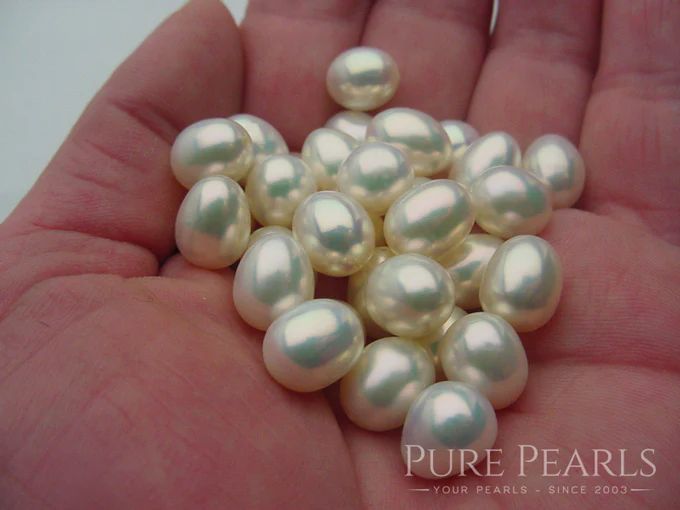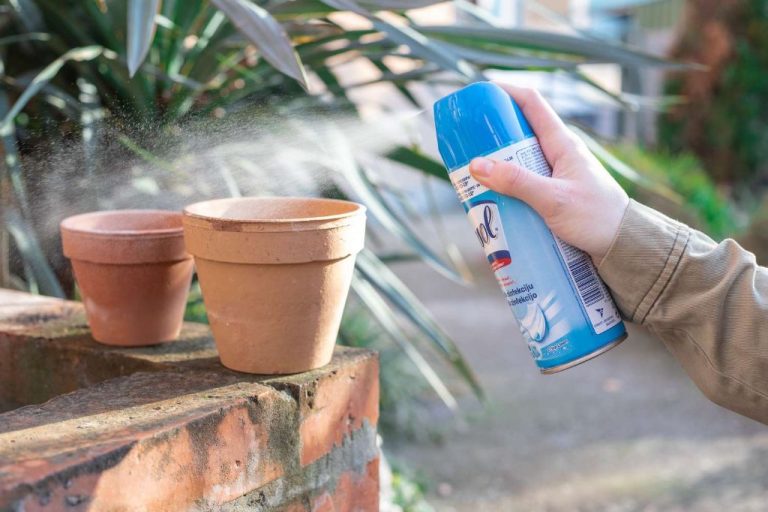Which Pearls Have The Best Lustre?
Pearls are highly prized gemstones that have been treasured for centuries. They come in a variety of types, but one of the key factors that determines a pearl’s value and beauty is its lustre. Lustre refers to how brilliantly a pearl reflects light. The more lustrous a pearl is, the more desirable it becomes.
This article will provide an overview of the most popular types of pearls – freshwater, Akoya, Tahitian, and South Sea pearls – and compare their levels of lustre. Factors that affect a pearl’s lustre, such as surface quality, nacre thickness, and orient, will be explained. We will also discuss the proper care to maintain and maximize a pearl’s lustre over time. By the end, you’ll know which pearl variety has the most beautiful and dazzling shine.
What Causes Lustre in Pearls?
Lustre refers to the brightness and shine that gives pearls their beautiful and desirable visual appearance. It is an optical phenomenon caused by the reflection and refraction of light from the layers of nacre in the pearl [1]. Nacre is the iridescent material that lines the interior of mollusk shells and forms around an irritant inside the mollusk to create a pearl.

The nacre is made up of thin layers of aragonite platelets and conchiolin. The aragonite is a crystalline form of calcium carbonate that is transparent and refractive. The conchiolin is an organic protein that holds the platelets together. Light entering the pearl penetrates and travels through these semi-transparent layers, reflecting and refracting off the different interfaces to produce an iridescent glow.
The more nacre layers in a pearl, the more interfaces light encounters, creating a deeper lustre. The quality and thickness of the nacre is key. Higher quality nacre with uniformly flat and oriented layers creates brighter, sharper reflections. This is what gives fine pearls their prized lustrous appearance [2].
Freshwater Pearls
Freshwater pearls come from mollusks that live in lakes, rivers, ponds and other freshwater sources around the world. The vast majority of freshwater pearls on the market today come from China. Freshwater pearl farming began in China in the 1920s and has expanded rapidly since the 1980s.
Freshwater pearls exhibit a wide range of lustre. Lower quality pearls have a dull, chalky lustre while high quality ones can have exceptional shine and orient. The species of mollusk, water conditions, and cultivation process all affect lustre. Most pearls farmed today use tissue nucleation techniques that allow for more control over lustre.
With the right mollusk species and cultivation techniques, freshwater pearls can achieve lustre comparable to fine Akoya pearls. However, consistency across entire strands is difficult, so matching high lustre is a challenge. The wide variability is why freshwater pearls are generally more affordable. But the potential for exceptional gems is there, especially in large sizes that can highlight their stunning iridescent orient.
Akoya Pearls
Akoya pearls originate from Japan and are cultivated in pearl farms along the coasts. According to The Pearl Source The Unmistakable Beauty of Akoya Pearl Luster, Akoya pearls exhibit exceptionally high luster due to their cultivation in cool, clean seawater around Japan. The water temperature, salt concentration, and lack of contaminants allow the nacre to deposit in smooth, reflective layers on the pearl.
Akoya pearls are considered among the most lustrous pearl types according to Pearls of Joy in their Pearl Luster Guide. Their luster is described as sharp, shiny, and highly reflective. This exceptional luster comes from the thick nacre, deposited perfectly smooth by the pristine water. Akoya pearls have a sharp, mirror-like surface reflecting light back intensely.
Several factors affect Akoya pearl luster according to Pearly Lustre Akoya Pearls guide. These include the cultivation environment, health of the mollusk, number of nacre layers, and texture of the nacre surface. By optimizing these factors, Akoya pearl farmers in Japan are able to produce some of the most lustrous pearls in the world.
Tahitian Pearls
Tahitian pearls are cultivated primarily around the islands of French Polynesia in the warm, tropical waters of the South Pacific Ocean. The unique environment produces pearls with a signature lustrous black, grey, and green overtone.
Tahitian pearls are known for having excellent lustre and reflections. The finest Tahitian pearls will have a metallic-like, mirror-like shine that clearly reflects light sources and facial features when used in jewelry (The Pearl Source). Their dark body color also accentuates the brightness of the pearl’s luster.
Luster is one of the primary factors used to grade Tahitian pearls. The top “A” grade Tahitian pearls will have an “excellent, shiny metallic quality” and crisp, distinguishable reflections (Pure Pearls). Lower grades will have progressively duller and less reflective lustre.
South Sea Pearls
South Sea pearls originate in the waters of Australia, Indonesia, and the Philippines. They are cultivated in Pinctada maxima oysters and have the largest size of all cultured pearls, ranging from 9-20mm. According to The Pearl Source, South Sea pearls are renowned for their exceptional lustre and depth of tone. The high reflection of light from their surface gives them a metallic, bright appearance.
Compared to other pearl types, South Sea pearls have the most lustrous pearls available. As described by Pure Pearls, their reflective surfaces create a visually stunning effect. The most prized South Sea pearls have a rich, luxurious lustre that reflects the face of the wearer, as noted by The South Sea Pearl. Their high nacre content contributes to this glowing, deep luster that surpasses freshwater and Akoya pearls.
Comparison of Lustre
When comparing the lustre of different pearl types, freshwater pearls tend to have the lowest natural lustre. As described by Pearls of Joy, “freshwater pearls will feature luster that is sharper, brighter and shinier, but still closer to a ‘AA+ Quality’ Akoya pearl than a ‘AAA'”1. Akoya pearls are known for their bright lustre and shine, rating higher on the pearl grading scale. Tahitian pearls exhibit a porcelain-like lustre with deep, iridescent overtones. And South Sea pearls display a rich, saturating glow with sharp luster.
Overall, South Sea pearls are considered the most lustrous pearl type due to their uniquely strong glow and sharp luster. The rich sea water and large size allows these pearls to develop an exceptional depth and saturation of lustre unmatched by other types. While Akoya and Tahitian pearls exhibit bright, sharp lustre, South Sea pearls stand out with their modeling and saturating glow.
Most Lustrous Pearl Type
When comparing the lustre of different pearl types, South Sea pearls are generally considered to have the highest lustre according to experts. South Sea pearls have a reputation for their beautifully high sheen and mirrored finish (Pearl Luster Guide). The nacre quality and thickness in South Sea pearls contributes to their exceptional lustre. South Sea pearls come in silver, white and gold shades, with the white variants exhibiting particularly strong lustre.
Tahitian pearls also rate very highly for their lustre, known for their exotic dark shades and ability to reflect light sharply. Tahitian pearls can achieve an “AAA” lustre grading, the highest possible (Pearl Quality Factors). Their thick nacre and large sizes allow Tahitian pearls to shimmer brightly.
While Akoya and freshwater pearls are affordable options, their lustre levels usually fall short of South Sea and Tahitian pearls. The thinner nacre of Akoya and freshwater pearls limits their reflective abilities. However, with careful selection, Akoya and freshwater pearls can still display very good lustre for their type.
Caring for Lustre
Proper care is essential for maintaining the beautiful lustre of pearls. Here are some tips for keeping your pearls looking their best:
Wipe pearls gently with a soft, damp cloth after wearing to remove dirt, oils and perspiration. Avoid using chemicals or abrasives as these can damage the nacre surface (source).
Use a mild soap or shampoo mixed with lukewarm water to gently clean pearls if they lose their shine over time. Make sure to rinse thoroughly and pat dry with a soft towel (source).
Store pearls separately from other jewelry to avoid scratches. Place in soft pouches or wrap gently in cloth.
Consider having pearls professionally restrung and polished every few years to revive lustre and maintain string strength (source).
Avoid over-exposure to chemicals in hairspray, perfume, chlorine, salt water, etc. which can degrade lustre over time.
Conclusion
When evaluating which pearls have the best lustre, factors like pearl type, thickness of nacre, surface quality, and care play important roles. Key takeaways on lustrous pearls include:
- Akoya pearls are known for their bright, mirror-like lustre thanks to their perfectly round shapes and smooth, high-nacre surfaces.
- Tahitian pearls have a rich, colorful iridescence that gives them unique and dramatic visual effects.
- South Sea pearls are prized for their satiny glow and overtones that seem to emanate from within.
- Freshwater pearls can have exceptional shine when they have thick, high-quality nacre and nearly round shapes.
- Proper care through gentle cleaning, storage, and avoiding damage can help preserve a pearl’s lustre over time.
While beauty is in the eye of the beholder, understanding what creates lustre allows pearl aficionados to choose the pearls with the most brilliant shine. With knowledge and care, these lustrous gems can dazzle for years to come.





